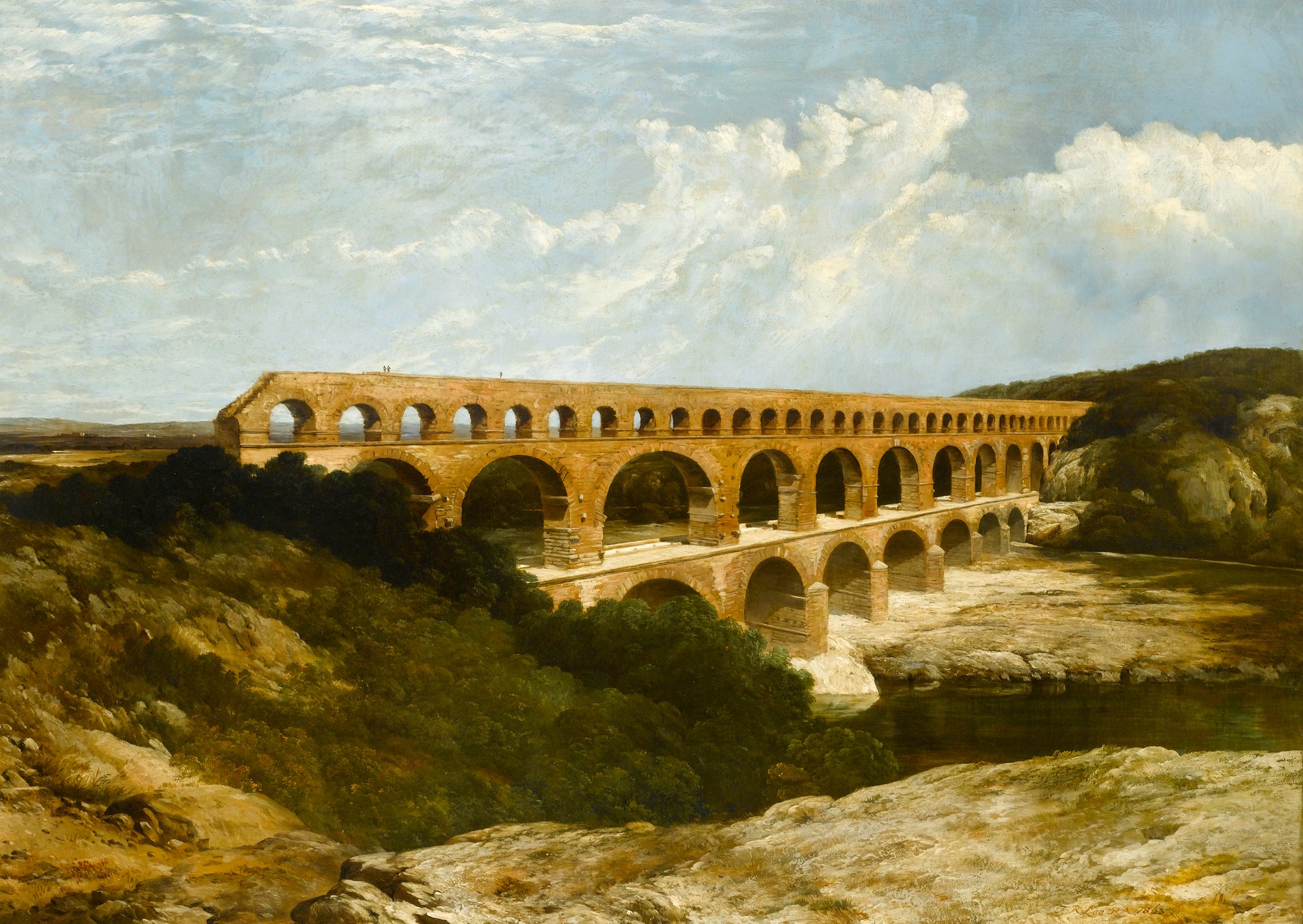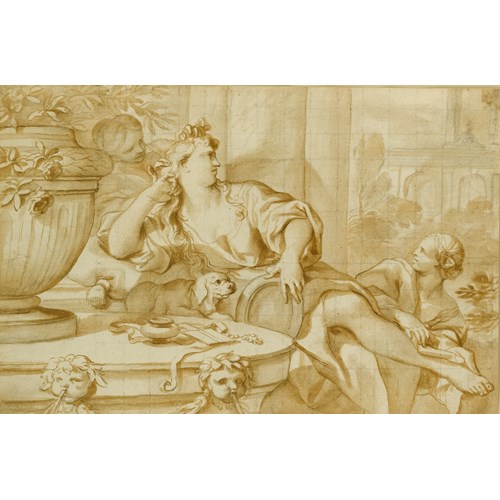Frederick Richard Lee
Le Pont du Gard
Date 1863
Epoque 1850-1900, 19th century
Origine England, South Africa
Medium Oil on canvas
Dimension 77.5 x 107.2 cm (30¹/₂ x 42¹/₄ inches)
Lee's expansive painting depicts one of France’s greatest surviving feats of engineering which dates from the early Roman Empire. The Pont du Gard is a Roman aqueduct crossing the River Gardon near Nîmes in the south of France. Constructed during the Roman Empire, it was long thought that it was built by Augustus’ son-in-law and aide, Marcus Vipsanius Agrippa in about 19 BC. However, more recent excavations now suggest that the construction took place in the middle of the first century AD. Designed to carry water across the small Gardon river valley, it was part of an aqueduct, nearly 50 km long that brought water from the Fontaines d’Eure springs near Uzès to the Castellum in the Roman city of Nemausus (Nîmes).
Built on three levels, the structure stands almost 50 metres high, and at its widest part measures 275 metres. The aqueduct was constructed entirely without the use of mortar, its stones, some of which weighed up to six tons, were precisely cut to tesselate perfectly together, thereby eliminating the need for mortar. The masonry was lifted into place by block and tackle, with a massive human-powered treadmill providing the power for the winch. A complex scaffold was erected to support the aqueduct as it was being built. Remarkably, the face of the aqueduct still bears the mark of its construction, in the form of protruding scaffolding supports and ridges on the piers, which supported the semicircular wooden frames on which the arches were constructed. It is believed to have taken about three years to build, employing between 800 and 1,000 workers. In 1985 the importance of the Pont du Gard was formally recognised when it was added to UNESCO’s list of World Heritage Sites. Certainly, the Roman architects and hydraulic engineers who designed this aqueduct created a technical as well as an artistic masterpiece.
In Le Pont du Gard Lee seems to have taken on some of the realist open air vitality of the earlier French landscapists, such as Pierre-Henri de Valenciennes. This broad scope of the landscape also helps to emphasise the monumentality of the aqueduct. By choosing the Pont du Gard as a subject, he had selected a construction which had been admired since its creation. Lee painted this monument from antiquity more than once, with a further version dated 1862 in a private collection. He is recorded as having visited the aquaduct as early as 1856, in the company of the great engineer Robert Stephenson (1803-1859) and the noted geologist Thomas Sopwith (1803-1879).¹
Lee was born in England but travelled extensively on the continent, painting many foreign scenes such as Le Pont du Gard. Landscapes were his preferred genre, and in these he was clearly influenced by John Constable and other contemporaries. Some of Lee’s more notable paintings were a collaboration with Thomas Sidney Cooper and Sir Edwin Landseer (1802-1873), where Lee painted the landscape and Cooper or Landseer added the animals. He was a prolific artist and painted works in a style which he knew would be popular.
¹ Sopwith, T., Notes of a Visit to Egypt by Paris, Lyons, Nismes, Marseilles and Toulon, (London, 1857), p. 59.
Date: 1863
Epoque: 1850-1900, 19th century
Origine: England, South Africa
Medium: Oil on canvas
Signature: Signed and dated ‘F.R. Lee RA 1863’ (lower right) and further signed and inscribed ‘No. 1 Le Pont du Garde- Roman Aquaduct near Nîsmes
[sic] F.R. Lee R.A.’ (on an old label on the reverse).
Dimension: 77.5 x 107.2 cm (30¹/₂ x 42¹/₄ inches)
Exhibition: Probably London, Royal Academy, 1863, no. 322.
Probably Liverpool, Liverpool Society of Fine Arts, 1863, no. 98.
Plus d'œuvres d'art de la Galerie









